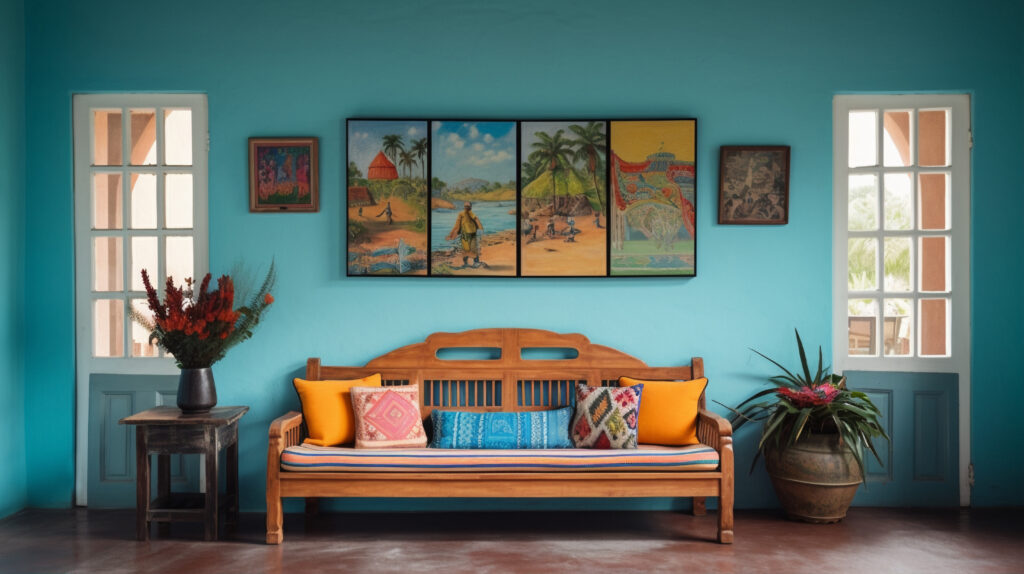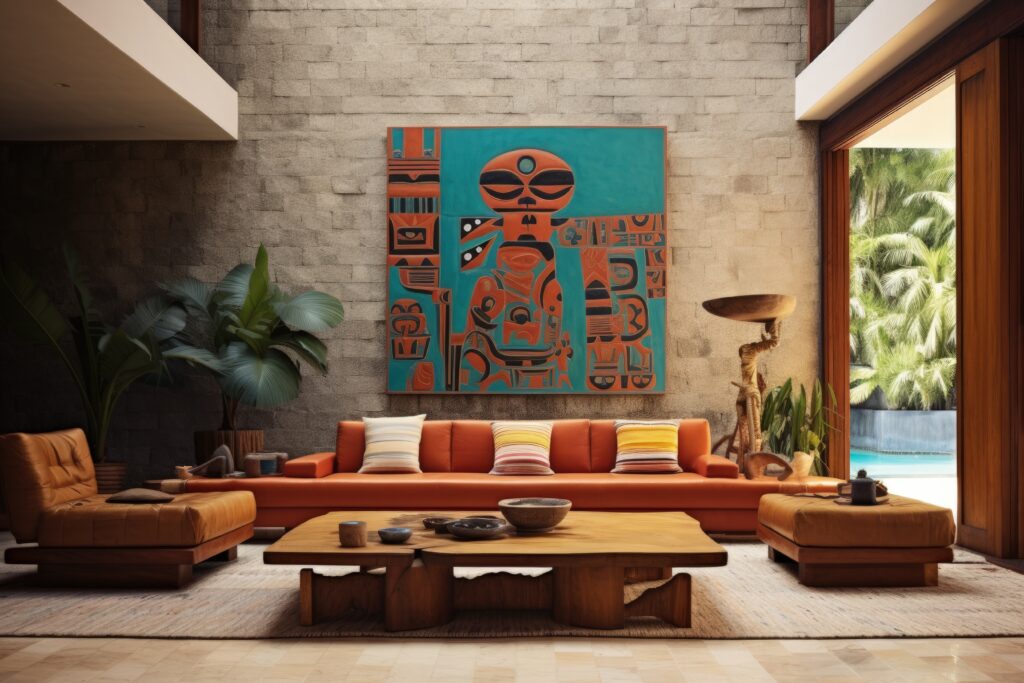Hello everybody! Have you ever pondered why you have so many interesting objects, paintings, and statues in your home? It’s not just for show, though they certainly do look great. It turns out that these ancient Indian handicrafts and home decor pieces are covered with an entire secret language.

Think about it: every civilization has its own symbols and stories, and India with its rich cultural heritage is no different. These symbols have existed for centuries with unique meanings and beliefs. So, the next time you look at that elephant statue in the corner, it might be more than just a decorative item!
Let’s Spill the Chai (Tea) on Some Popular Symbols
Alright, enough suspense. Let’s dive into the world of رمز (ramz), which is the Arabic word for “symbol”, and unveil the meanings behind some common Indian decor items.
- The Mighty Ganesha: You can’t miss this elephant-headed God with a potbelly. He’s one of the most popular deities in Hinduism and is considered the remover of obstacles. So, if you’re starting a new project or facing challenges, having a Ganesha idol around is a good idea!
- Paisley Power: Those swirly teardrop-shaped patterns you see everywhere? That’s paisley, and it’s not just trendy, it’s symbolic! Paisley is often said to represent a mango, a fruit associated with prosperity and fertility. So, paisley prints are like little lucky charms for your home!
- Om for Peace: This sacred symbol is found everywhere, from yoga mats to wall hangings. Om represents the divine and the universe, and it’s believed to bring peace and harmony. Chanting “Om” is also a common practice in yoga and meditation.
- Hamsa Hand: Seen a hand with an eye in the middle? That’s the Hamsa hand, an ancient symbol believed to ward off evil and bring good luck. It’s a popular choice for doorways and jewelry.
- Rangoli Revelry: Those beautiful colored patterns you see drawn on floors during festivals? That’s a Rangoli. People believe that Rangoli welcomes good luck and prosperity, with designs often incorporating flowers, geometric shapes, and other auspicious symbols.
Beyond the Basics: Unwrapping the Stories
These are just a few examples, but there’s a whole world of symbolism out there! Here are some other cool things to look out for:
- Animals: Animals like peacocks (beauty), owls (wisdom), and cows (abundance) are all featured in Indian decor, each with their own special meaning.
- Colors: As you may know, colors also have symbolic meanings. Yellow is connected to study and wisdom, green to fresh starts, and red to fire and passion.
- Flowers: Lotus flowers symbolize purity, mango leaves represent good luck, and marigolds are associated with festivity.
DIY Time: Make Your Own Symbolic Decor!
Now that you’re in the know, why not create your own symbolic decor? Here are some fun ideas:
- Paint a Rangoli: It’s easier than you think! You can find tons of Rangoli designs online or get creative with your own.
- Design a Paisley Dreamcatcher: Dreamcatchers aren’t just for Native American cultures! Make one with a paisley pattern in the center for a unique twist.
- Craft a Colorful Hamsa Hand: Grab some clay or paper and create your own Hamsa hand to hang on your door or wall.
The Takeaway: Your Home, Your Story
So, give those handicrafts and décor pieces a closer look the next time you stroll about your home. These may be mini tales waiting to be told, rather than mere ornaments. You can establish a connection with your ancestry and design a home that expresses your individuality and sense of style by comprehending the meanings associated with them.
So, we explored the رمز (ramz) – the secret language – hidden in traditional Indian decor. But this is just the tip of the iceberg! Indian handicrafts and home decor are like windows into a rich cultural heritage, each piece holding a story waiting to be heard.
Here are some ways you can delve deeper:
- Visit a museum or art gallery: Many museums have exhibits on Indian art and culture. Seeing these items in person can give you a whole new appreciation for the craftsmanship and symbolism.
- Talk to your family: Ask your parents, grandparents, or other relatives about the handicrafts and decor in your own home. They might have interesting stories to share about where the pieces came from and what they mean to your family.
- Explore online resources: There are tons of websites and articles dedicated to Indian art and culture. Do some research and learn more about the specific symbols that interest you.
The Power of Personalization
With this knowledge, you can now create a home that reflects your own personality and style.
- Mix and match traditional and modern: Don’t be afraid to combine traditional Indian decor with more modern pieces. This can create a unique and eclectic look.
- DIY decor with a twist: We already talked about some DIY ideas, but the possibilities are endless! Use your newfound knowledge of symbols to create decor that has a special meaning to you.
- Upcycle old items: Got an old lamp or piece of furniture? Give it a new lease on life with a fresh coat of paint and some symbolic touches.
Conclusion
By understanding the symbolism behind Indian furniture, you can transform your home from a collection of rooms into a space that makes a statement. It’s a way to connect with your property, express your individuality and create a home that feels truly unique. So, keep exploring, keep creating, and fill your home with meaning!
Bonus Tip: When shopping for handicrafts, try to support local artisans and fair trade organizations. This way, you can be sure that you’re getting high-quality, ethically made products.
